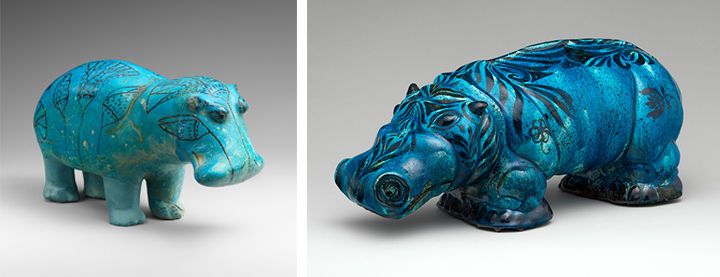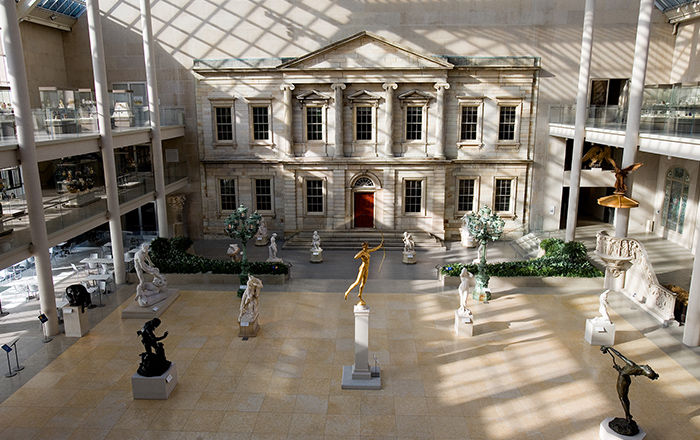Hippopotamus
Carl Walters American
Not on view
This hippopotamus, with its bright turquoise glaze over black underglaze decoration, is a wonderful example of what became known as "Walters blue," the brilliant blue glaze Walters developed in the early 1920s and which became synonymous with the artist. In form and decoration, this sculpture directly references the works of art prominently displayed in the Egyptian galleries in the 1920s that the artist admired and studied. Walters was especially enamored by the faience jewelry and figures on display, including the Middle Kingdom Standing Hippopotamus acquired in 1917 (17.9.1), well known to us as "William." Walters was one of the first artists in this country during the 20th century to bridge the gap between sculpture and ceramic arts, and this hippopotamus perfectly illustrates this important aspect of his work. Like many of the animal sculptures he created, the hippo is embellished with an allover pattern of abstract foliate and scroll motifs under a brilliant turquoise glaze, an unabashedly modern and original approach to ceramic sculpture.
This image cannot be enlarged, viewed at full screen, or downloaded.
This artwork is meant to be viewed from right to left. Scroll left to view more.



